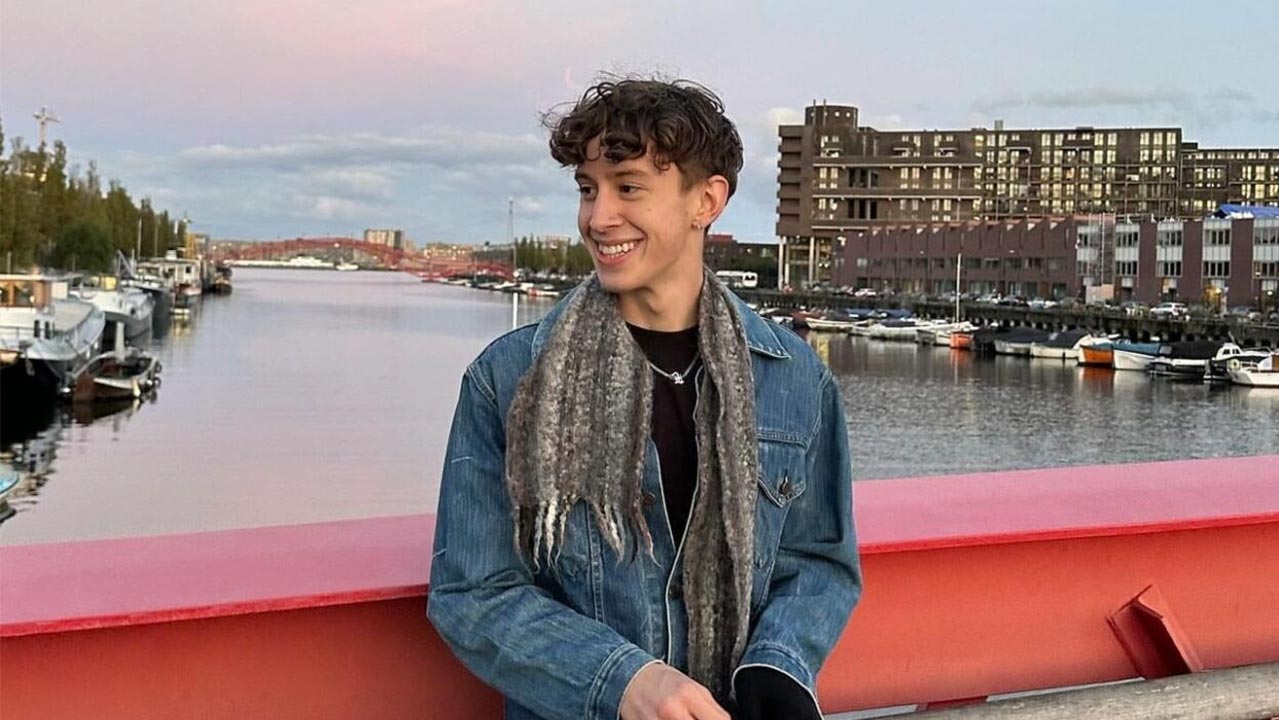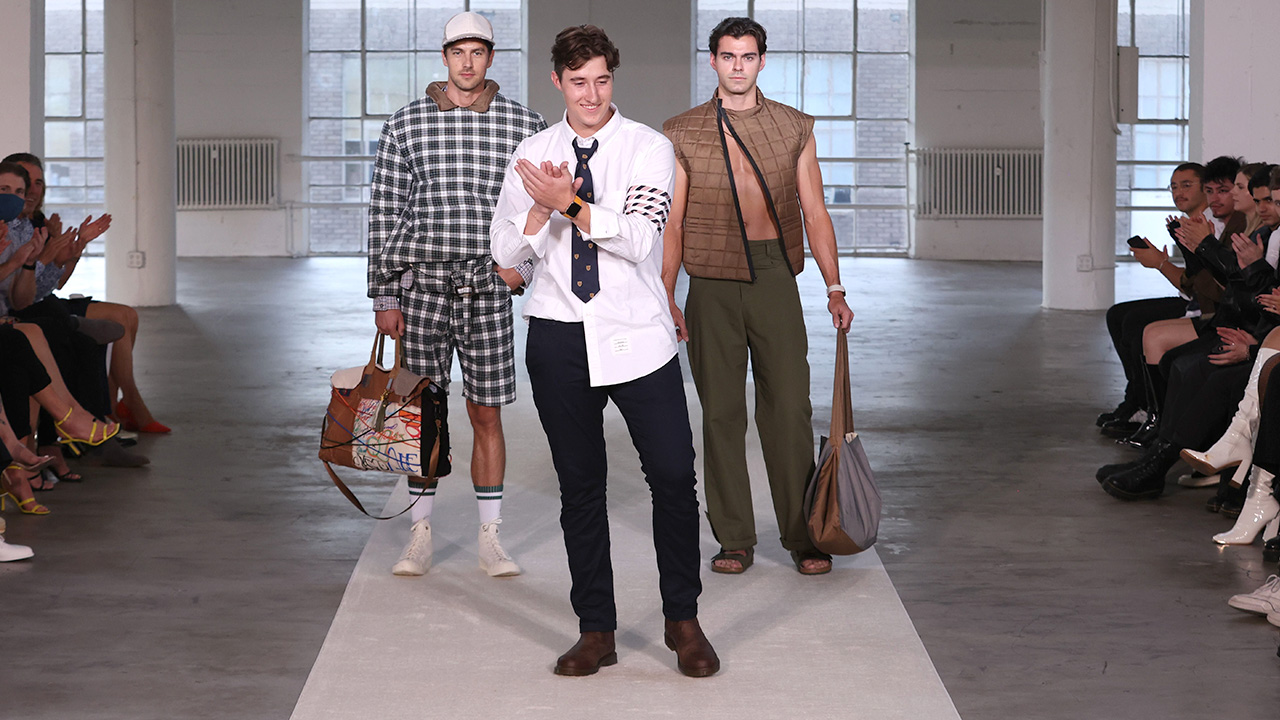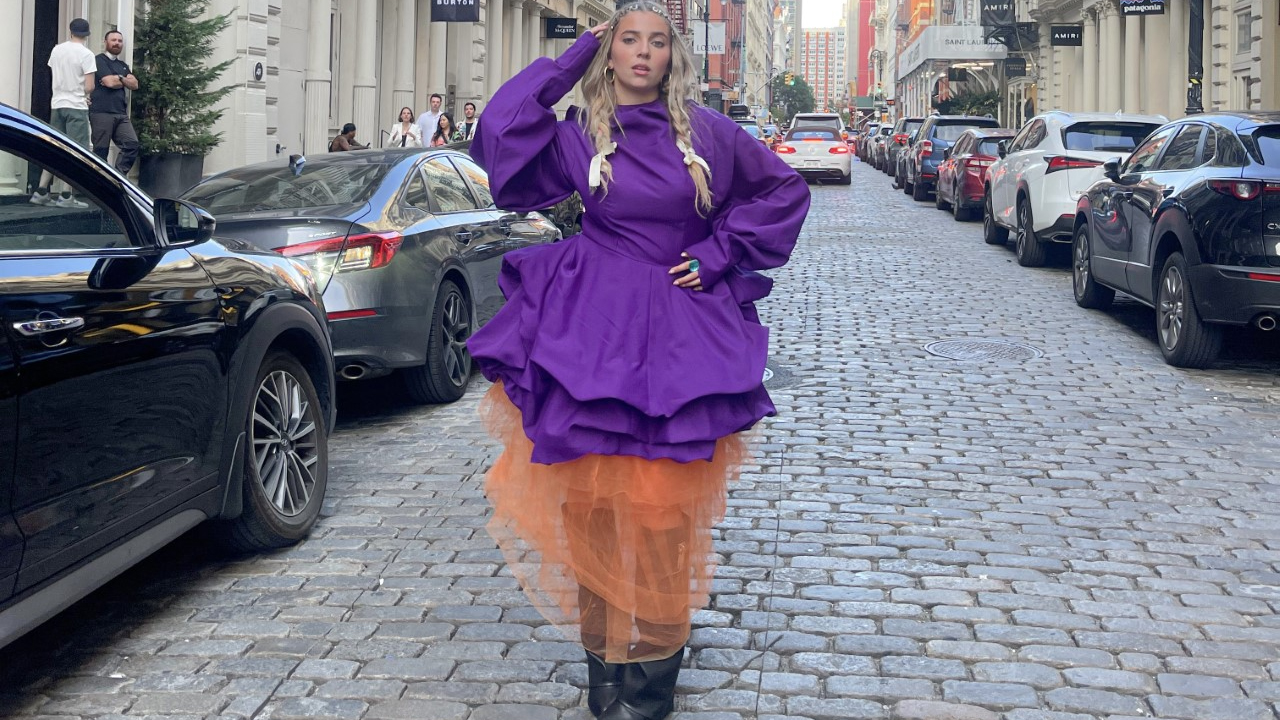
Student
FIDM Social Ambassador Lexy Silverstein Styled In Fellow FIDM Student Andres Guerra's Designs During NYFW
Digital Marketing student Lexy Silverstein attended New York Fashion Week this year to explore sustainable fashion for her blog. She grew up in Rockville, MD and attended Richard Montgomery High School where she led a chapter of FIDM Fashion Club before moving to Los Angeles to study at FIDM.
A lifelong lover of fashion and design, her own research led her to learn about the waste the industry can create. “So when I decided to turn my passion for fashion into a career,” Lexy says, “I knew I wanted to be part of the solution.” She now partners with organizations dedicated to promoting sustainability in fashion and advocates from within to create change.
While prepping for the week, she connected with fellow FIDM student Andres Guerra after finding his work on Instagram and learning that he’d incorporated sustainability into his collection. “Andres Guerra’s designs are so eye-catching, how could I not notice his work?” The collaboration worked out well for both Lexy and Andres. “As much as I loved his designs, so did many fashion photographers in New York that week. His dress ended up being one of Getty Images feature images for NYFW.”
We checked in with Lexy to learn more.
Tell us about your work with fellow FIDM student Andres Guerra during New York Fashion Week. I didn’t know Andres personally so I messaged him through Instagram letting him know I was covering New York Fashion Week’s sustainable designers for my blog and one of my partners. I asked him if he had any designs he’d like me to wear that week and he generously sent me dresses from his capsule collection called “Las Chamas.” His designs are a colorful celebration of and homage to his culture. He creates designs playing with layers, raw edges, and dramatic silhouettes. Andres told me, “Sustainability actually played a huge and important part in creating one of the designs in the collection. When I completed the gown for the collection, I realized there was so much excess scrap fabric. I knew I had to make a new design from scratch because something felt wrong about not using these scraps. To create the skirt and top combo, I used all the remaining scraps I had to create this look.”
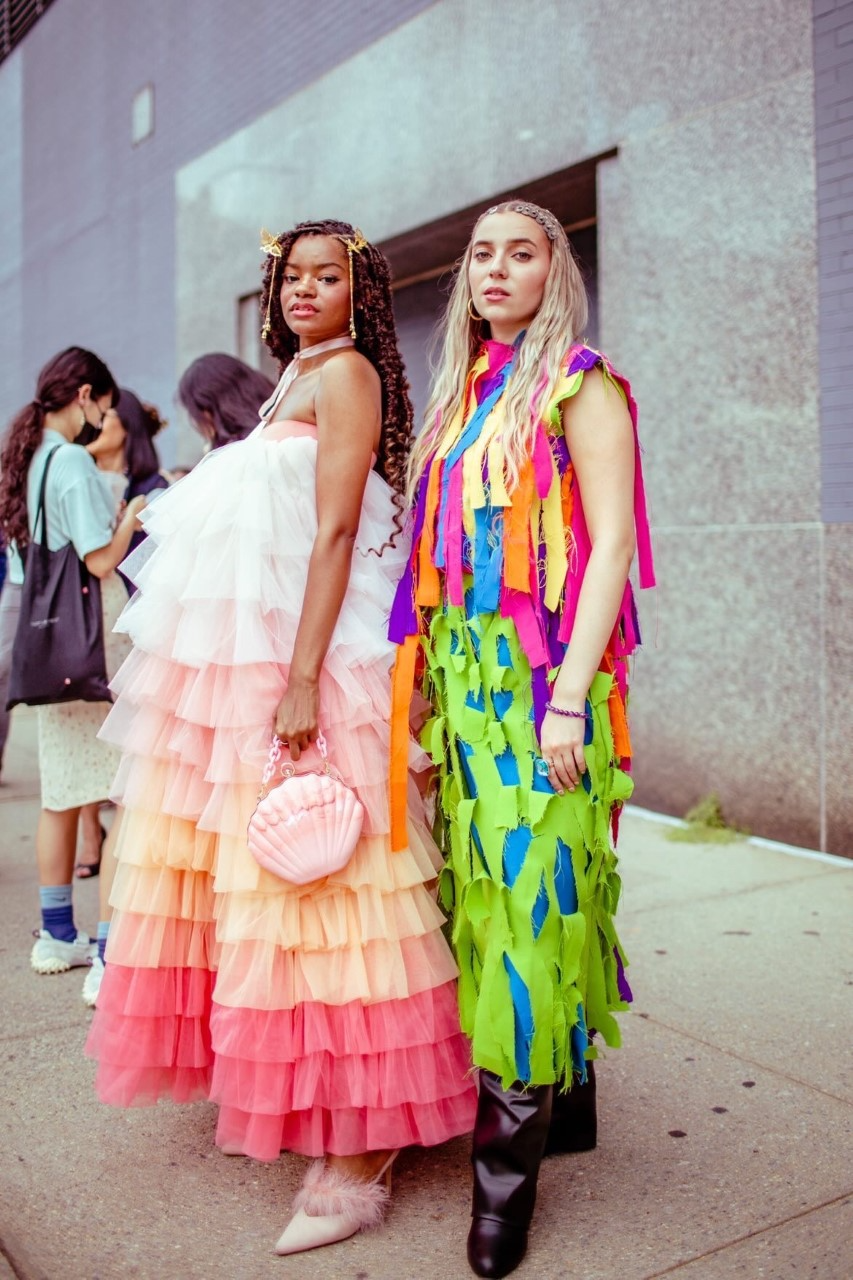
It was such an honor working with a fellow FIDM student, especially one as talented as Andres. You can follow Andres on Instagram @_andreswar_ to see more of his work.
You’re a passionate advocate for sustainability in fashion. Why is it so important to you? I have loved fashion since I was a little kid. I loved the freedom it gave me to express my personality, my moods, and my individuality. But as I grew up and got even more involved in the industry, I started to learn about the incredible waste it caused so I started researching and the more I learned, the more I was sickened. Some organizations have reported that fashion is the 2nd most polluting industry behind oil. Other reports state it's responsible for 5 - 10% of all global carbon emissions. I’m not sure the experts yet know the exact extent of the pollution caused by fashion, but I think most of us can agree it’s bad. Especially when it comes to the amount of energy and water it takes to make clothing and then the water pollution caused by all of the toxic chemicals to dye clothing. I could go on and on about this but if you just conduct a quick image search on the internet for textiles in landfills, you’ll be greatly disturbed by the photos. Think about all the pollution that happened during the manufacturing process of clothing and how the damage continues forever. It can take 200+ years for some of those materials to decompose in a landfill, and during that decomposition process, more greenhouse methane gas is generated and toxic chemicals and dyes continue to leech into the soil and groundwater causing further contamination. It’s a long, vicious, and damaging cycle.
I took the time to educate myself more about the harmful practices of the industry and how this is affecting not only us, but also our planet. I want to make a difference so I’ve changed my buying habits and I try my best to educate my family, friends, and any social media followers about ways they can be both sustainable and fashionable. I know the industry can do so much to improve its carbon imprint and I want to be one of the leaders driving those changes. We only have one planet so we need to take care of it and I think we can do that without compromising our fashion style. One of the best ways to prevent waste is by thrifting. If you don’t love second-hand shopping yet, I invite you to shop with me and I promise you’ll fall in love.
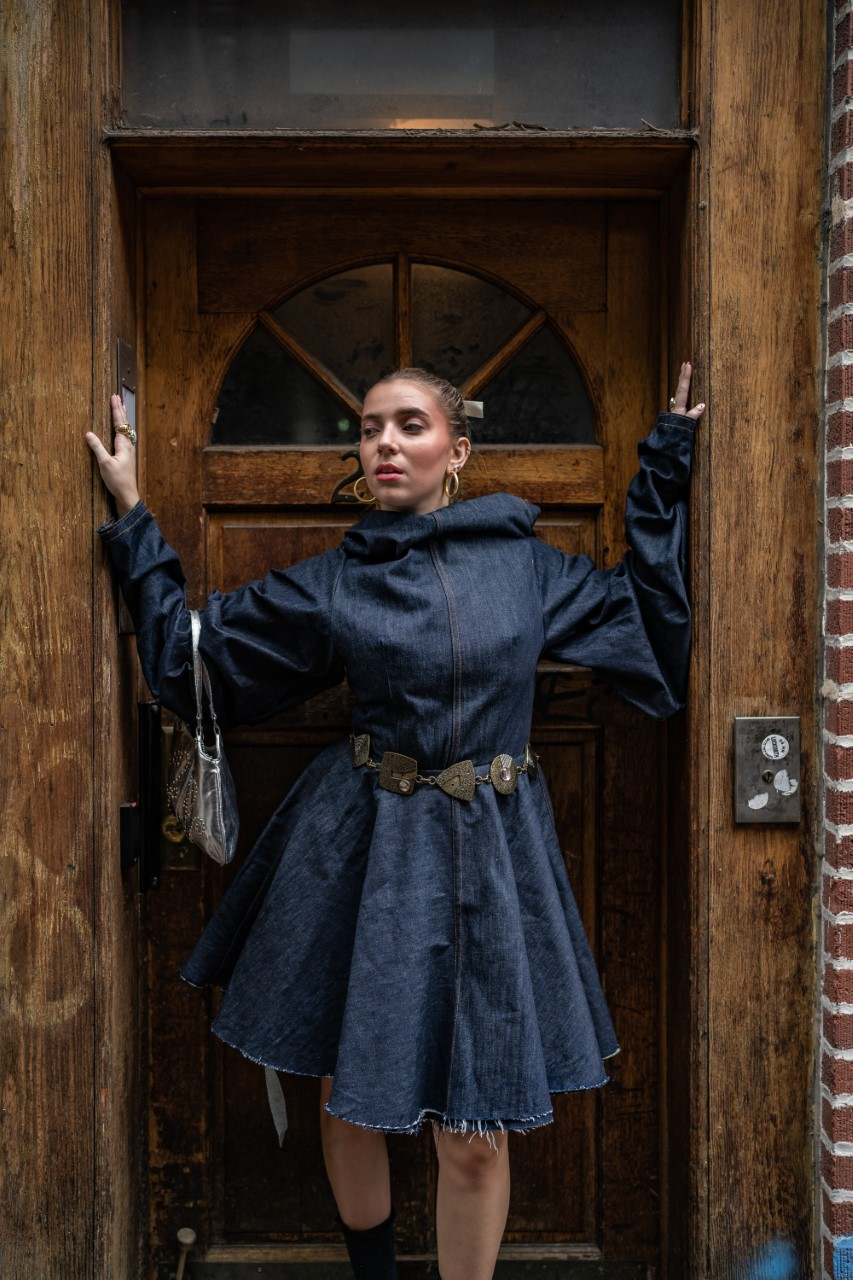
What was your path to FIDM like? As I’ve stated, I was lucky, I knew I wanted to work in fashion my entire life. Ever since I could crawl, I would make my way into my mom’s closet and go straight for her jewelry, shoes, and clothes. When I was in high school, I started using social media as a way to showcase my love for fashion by writing blogs, working with brands, and learning how to sew and style outfits. I was so excited to learn more about fashion, I graduated from high school a year early so I could specifically learn more about this industry in college. Between my decision to graduate early and COVID, my college admissions process was a bit rushed. I had always thought I’d go to the The Fashion Institute of Technology (FIT) in New York because I lived just outside Washington D.C. and I was always traveling to New York, but when I decided to graduate early, my guidance counselor introduced me to other colleges with fashion programs. That’s where I first heard about this school in California called the Fashion Institute of Design and Merchandising or FIDM. I had family in California so on our next big family trip to see them, I made a point to visit the school. I instantly fell in love and I knew FIDM was the school for me. I was also super excited to learn that I could start a FIDM Fashion Club my senior year in high school and actually get a scholarship from FIDM. So of course, that’s exactly what I did. I got to connect with my classmates to talk fashion and started to feel very connected to FIDM before I ever even applied. I’d strongly recommend any high school students interested in FIDM find out about the fashion club.
I started FIDM in the middle of COVID so just like so many other college students in the fall of 2020, my experience was a bit hampered by online classes, but there were so many ways to get involved remotely. I started meeting with peers on FIDM MODE, a magazine by FIDM students for FIDM students that promotes design, student life, and features events on and around campus. I applied to be a FIDM social media ambassador and even worked as the FIDM social media intern. I really am enjoying college life at FIDM. I couldn’t be happier here.

What are your career goals? I have a few different goals and career paths I’m considering. I’ll have to wait and see which direction life takes me in but all of them have to do with sustainable fashion. No matter what job I do in the industry, I want to make a change. My main goal is to use my platform to not only educate people in ways the fashion industry is harmful but also teach them methods to improve their shopping habits and become more sustainable. I have been a part of a few different organizations, like Remake, who advocate for legislation to protect garment workers from unhealthy working conditions and ensure fair wages. You always hear about those dangerous sweatshops in other countries where people get paid so little to make clothing. I was shocked when I learned there were sweatshops right here in the U.S.
I want to continue to push for this kind of change. I’d also love to work with unsustainable brands to help guide them on realistic, transparent yet aggressive sustainable plans. If major fashion brands change their business models and habits, then only sustainable fashion would be offered thus essentially forcing all consumers to shop sustainably. Or if the public is educated on this subject, perhaps they will demand sustainable options from all brands, and companies will be forced to make big changes to meet those demands.
Anything else you’d like to add? I would just say if anyone is considering applying to FIDM to follow the social media so you can get a real feel for what students are doing on a daily and weekly basis. No college is perfect and whatever you are considering will come with pros and cons. But in the end, whatever college you choose, it really comes down to whether or not you truly take advantage of the opportunities and how much you get involved. Your experience will always be better if you decide to take risks, sign up and get involved in things that might even be outside your comfort zone. Challenge yourself, try new things, meet new people and even fail at things. Failing is learning. My goal is to fail, but to fail faster so I can learn, grow, and improve. I hope my experience has helped someone out there. Please reach out to me if you have any questions.
Explore more of Lexy’s work on her blog eLEXYfy.com and on Instagram @lexysilverstein.
Categories: Digital Marketing Student

